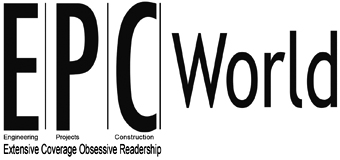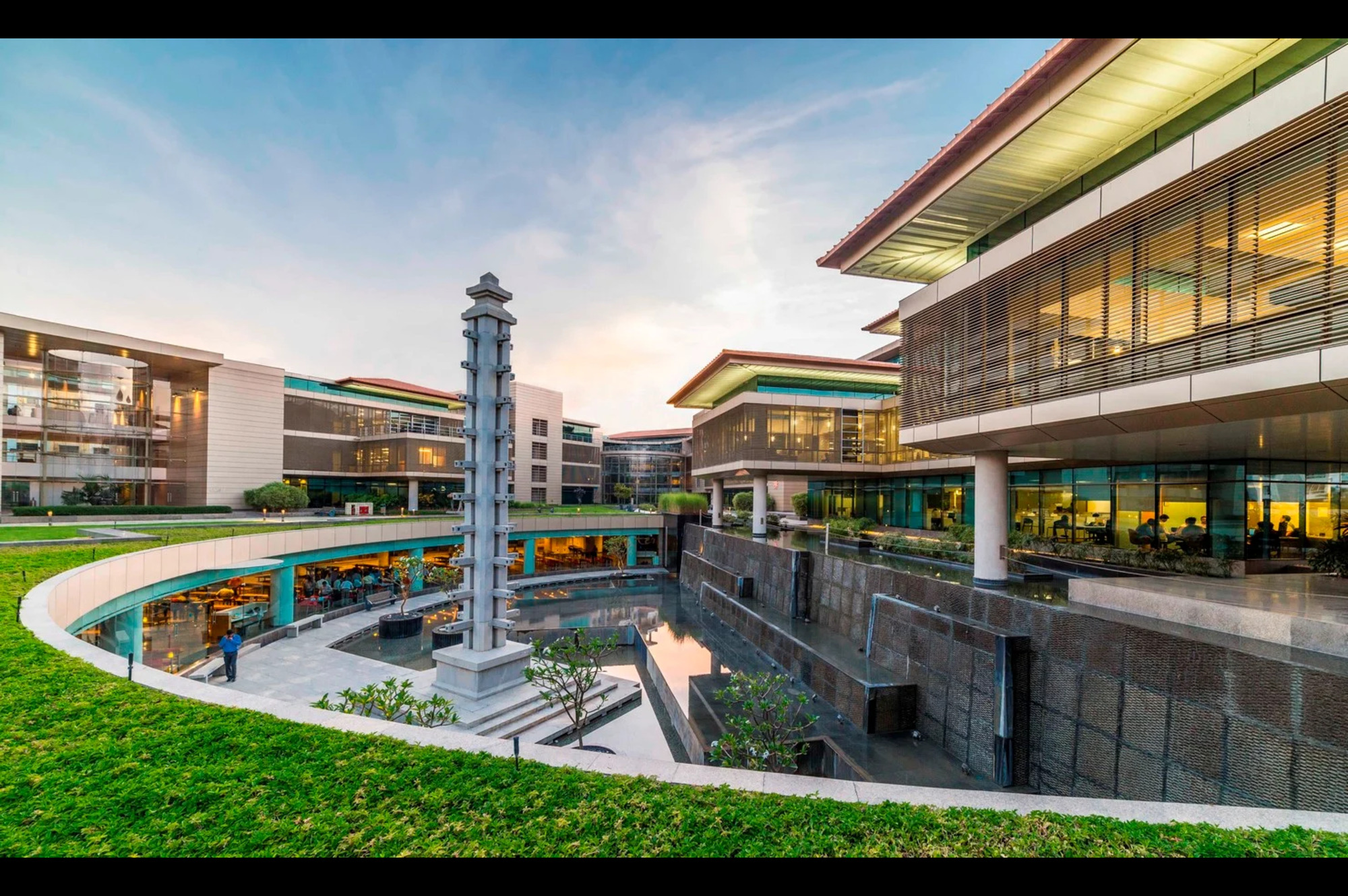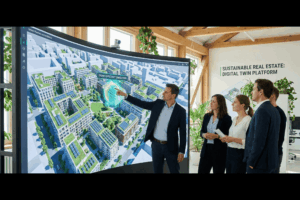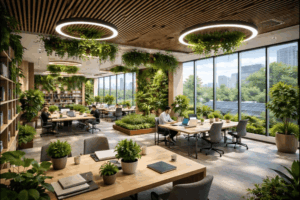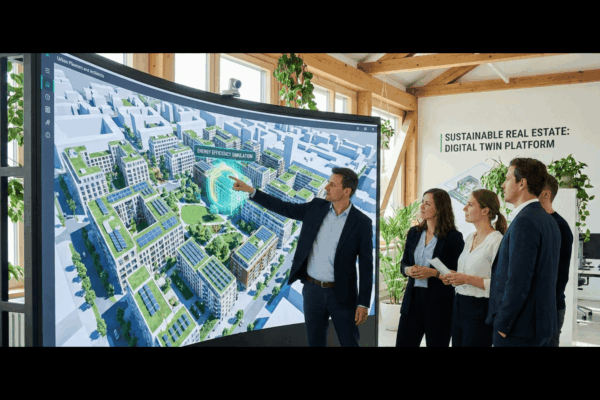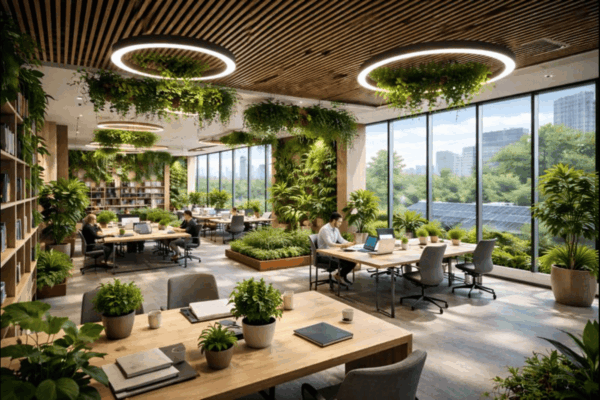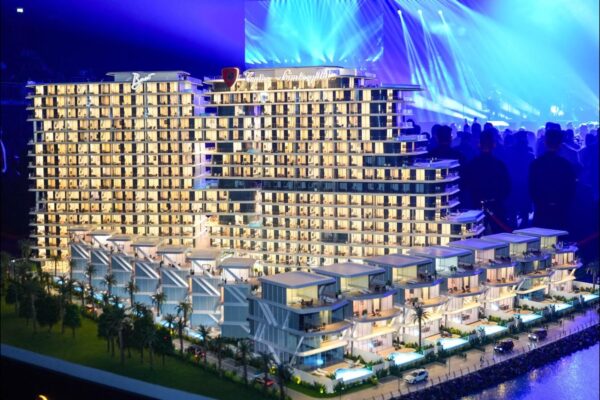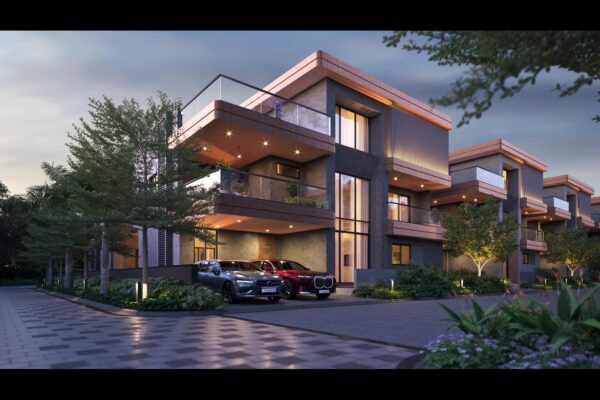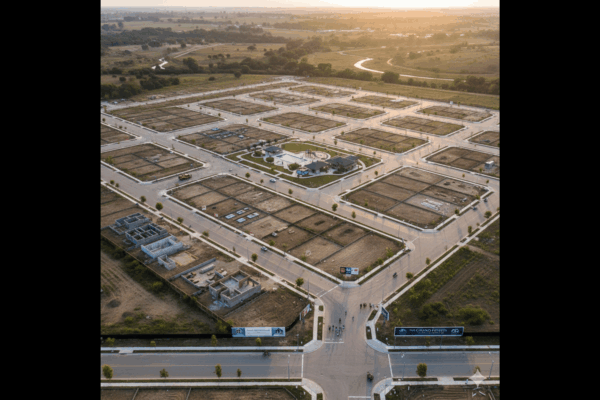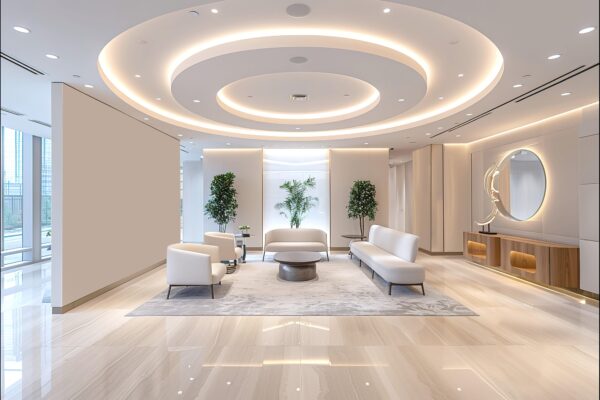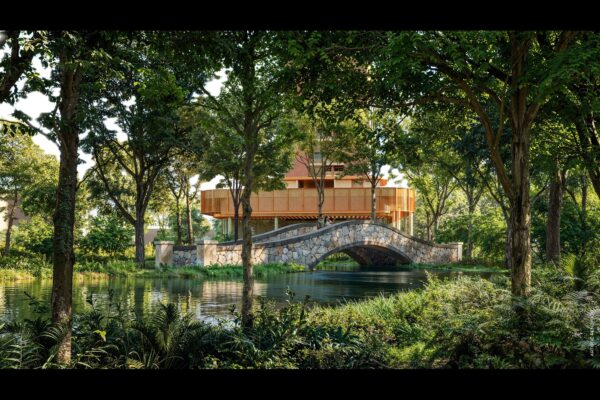Green Buildings: Nurturing wellbeing and a healthier tomorrow
Green buildings are transforming India’s construction landscape by promoting sustainability, reducing energy and water consumption, and enhancing occupant health. Beyond environmental benefits, these structures foster wellbeing through improved indoor air quality and comfort. As India accelerates towards its net-zero goals, green building practices are becoming essential for creating healthier, resilient communities and a sustainable future
The environment is degrading at an alarming pace, and experts are seeking effective solutions to secure a greener future for the coming generations. Across industries, efforts are underway to curb greenhouse gas emissions, and the construction sector is no exception. Once limited primarily to commercial buildings, the green building movement has now expanded its reach to industrial manufacturing facilities, warehouses, data centres, hospitality projects, and beyond major metropolitan areas. Over the past decade, this transformation has extended even further to include affordable housing, schools, hospitals, retail developments, and a wide range of industrial spaces. “India’s green building footprint is growing gradually. What began as a niche concept is now becoming a mainstream imperative. Over the past decade, the sector has expanded well beyond commercial offices to include affordable housing, schools, hospitals, retail, and industrial spaces. This growth reflects a fundamental shift in perception,” says Sanjay Seth, Vice President and CEO, GRIHA Council & Senior Director, TERI. This momentum is being fuelled by a combination of environmental urgency, economic benefits, and supportive policy frameworks. With buildings accounting for nearly 40% of global energy-related carbon emissions, India’s construction sector holds immense potential to contribute to climate change mitigation. Rising energy costs, corporate ESG commitments, investor pressure, and increasing public awareness are pushing developers, architects, and urban planners to adopt sustainable practices. According to reports, green buildings can reduce energy consumption by 20–30 per cent, cut water usage by 30–50 per cent, and significantly lower waste generation through extensive recycling.
According to the US Green Building Council, green building is a holistic concept that starts with the understanding that the built environment can have profound effects — both positive and negative — on the natural environment, as well as on the people who inhabit buildings every day. It is an effort to maximise the positive and mitigate the negative impacts throughout the entire life cycle of a building. While definitions vary, green building is generally understood as the planning, design, construction, and operation of structures with several central considerations: energy efficiency, water conservation, indoor environmental quality, sustainable material selection, and minimal impact on the site’s ecology. “Many projects now target Net Zero performance in energy, water, waste, and carbon, driven by ESG commitments and sustainability disclosures. Smart technologies such as automation, smart meters, and performance tracking tools are becoming standard. Sustainable materials and products have also played a vital role. The use of locally sourced, low-impact materials such as fly ash bricks, recycled steel, bamboo, and natural stone helps reduce embodied carbon while supporting local economies. At GRIHA, we promote climate-responsive strategies by encouraging passive design, efficient resource use, and eco-friendly materials,” says Sanjay Seth.
Navigating green certifications
As sustainability gains increasing focus in the built environment, numerous green building rating systems have emerged globally. This proliferation naturally leads developers and project teams to ask: which certification is best suited for their project? “The choice of a green building rating system should be guided by the project’s goals, typology, geographic context, and long-term performance aspirations,” says P GopalaKrishnan, Managing Director, Southeast Asia & Middle East, GBCI. The most appropriate rating system depends on the specific objectives, scale, and context of the project in question. Understanding these factors is essential to select a certification that aligns with the project’s sustainability ambitions and delivers maximum value. Green building rating frameworks are designed to serve varied objectives, whether it’s enhancing energy efficiency, improving occupant comfort, conserving water, or reducing embodied carbon. The key lies in identifying a rating system that aligns closely with your project’s sustainability vision and operational needs. While various green building ratings and certifications coexist, there are two key aspects of ratings and certifications: ease of implementation for short-term benefits, and the credibility and transparency of the certification for long-term value and impact. The GRIHA rating framework recognizes the diverse nature of building typologies and the evolving expectations of stakeholders. “Over the years, we have developed a comprehensive suite of rating variants in the context of Indian climatic conditions and construction practices. This flexible and context-sensitive approach allows project teams to select a rating that fits their scale, purpose, and budget without compromising on performance,” says Sanjay Seth.
Certification offered by GRIHA Council include GRIHA for new constructions, SVAGRIHA for small and medium-scale projects, GRIHA for Affordable Housing (GRIHA AH), GRIHA for Existing Buildings (GRIHA EB), GRIHA for Existing Schools (GRIHA ES), GRIHA for Interior Spaces (GRIHA for InS), GRIHA for Large Developments (GRIHA LD), GRIHA for CITIES, GRIHA Infrastructure ratings such as for highways and ports, etc.
GBCI India has been at the forefront of ‘Green’ transformation by facilitating the adoption of globally recognized certification systems like LEED, TRUE and Edge, and by engaging with developers, policymakers, and professionals to drive capacity building. Through initiatives such as LEED for Cities and Communities, GBCI India helps integrate equity, resilience, and decarbonization at scale. “LEED, administered by GBCI, provides a global, performance-based framework with third-party validation that focuses on energy efficiency, water conservation, human health, and carbon reduction. For developers seeking international best practices, market credibility, and long-term operational savings, LEED remains a robust choice. We encourage builders to evaluate systems not just for their checklist-based compliance but for their ability to deliver measurable outcomes aligned with sustainability and ESG goals,” says P. GopalaKrishnan.
Greening Challenges
Despite the promising growth of green buildings in India, the green building movement faces several challenges that slow wider adoption. One of the primary hurdles is the higher initial cost associated with sustainable materials, advanced technologies, and certification processes, which can deter budget-conscious developers. “The perception that green certification raises project costs is common, especially among smaller developers in Tier 2 and Tier 3 cities, where margins are tighter and awareness is still growing. However, it’s vital to view green certification not as an additional expense but as a long-term investment that delivers significant returns,” says Sanjay Seth. Echoing this, P. GopalaKrishnan adds, “This perception stems from a misunderstanding of green building principles. In reality, integrating sustainability from the design phase often results in lower lifecycle costs due to savings in energy, water, and maintenance. At GBCI, we are working closely with small and mid-sized developers in Tier 2 and Tier 3 cities to provide technical guidance, localized case studies, and cost-benefit tools that demystify the process.” GBCI offers a wealth of educational resources, including webinars, workshops, and online training programs, specifically designed to help developers understand the LEED rating system and the certification process. “Additionally, we collaborate with various organizations, including local governments and industry partners, to reach a wider audience of small developers and promote the adoption of green building practices,” says P. GopalaKrishnan.
“We are standing at a pivotal moment where India envisions becoming a developed nation by 2047. In this journey, the pace of development will be rapid and critical. However, at this speed, sustainability often takes a backseat, resulting into infrastructure being locked as resource-intensive systems for the next 50-60 years. Therefore, it is essential to integrate green and sustainable practices into the development process right from the outset, ensuring inclusive and environmentally responsible development,” says Sanjay Seth. GRIHA is trying to address these challenges by emphasizing on education and capacity building. For example, GRIHA regularly conduct workshops and training sessions for architects, engineers, planners, consultants, students, industry professionals and developers to demystify sustainability concepts and highlight cost- saving opportunities through energy efficiency and resource management. “Additionally, we focus on early integration of green principles in the design phase, which greatly reduces implementation challenges and cost overruns,” adds Sanjay Seth.
Policy frameworks fuelling green growth
The Indian government has recognised the critical role of green buildings in achieving national sustainability goals and combating climate change. “Policy frameworks play a catalytic role in mainstreaming green buildings. While several state level mandates have emerged, a national-level alignment around energy, water, and GHG emission standards can bring scale and consistency. We advocate for performance-linked incentives, faster clearances for certified projects, and the integration of green building criteria in urban planning policies. Collaboration between the government and organizations like GBCI can ensure that sustainability is not treated as a compliance exercise but as a strategic investment in national resilience,” says P. GopalaKrishnan.
Several policies and initiatives have been introduced to encourage the adoption of sustainable construction practices. “The Smart Cities Mission, Pradhan Mantri Awas Yojana (PMAY), Urban and Gramin presents unique opportunities to promote sustainability in urban planning and embed green design and sustainable construction and building practices in mass affordable housing, respectively. Frameworks like the Energy Conservation Sustainable Building Code (ECSBC) and Eco-Niwas Samhita (EnS) provide essential regulatory guidance for energy efficiency in commercial and residential buildings. However, these must be uniformly adopted across states and integrated into municipal building approval processes to have a real on- ground impact,” says Sanjay Seth. Providing incentives based on building taxonomy enables a more strategic approach to promoting green buildings. To incentivise green construction, many state and city authorities already offer benefits for GRIHA-rated projects, including additional Floor Area Ratio (FAR), property tax rebates, fast-track approvals, and adoption by public agencies such as CPWD and NBCC have mandated GRIHA in many of their developments, with financing support available for select projects. “To scale impact, these incentives must be extended to retrofitting existing buildings and affordable housing, not just premium developments. Offering rebates on green building products and materials with Environmental Product Declarations (EPDs) encourages the use of low-impact, resource-efficient options. It will not only promote transparency and environmental responsibility in manufacturing but also make sustainable choices more accessible and financially viable for developers, accelerating market transformation toward greener construction practices,” adds Sanjay Seth.
Health-centric green buildings gain prominence
The green building movement in India has gone a notch higher in recent years, especially after the advent of the pandemic, which brought renewed focus on occupant health and wellbeing. “With growing recognition of the impact of the building on the environment, human health and productivity, demand for strategies that promote healthier indoor spaces and zero- waste operations. In India, rapid urbanization and increasing building density have made occupant well-being and waste management critical concerns, requiring innovative and context-sensitive solutions. From our experience at GRIHA, we’ve seen a marked shift in awareness, particularly among developers in the commercial, hospitality, and institutional sectors. There is growing interest in factors like indoor air quality, mental health, daylight access, and thermal comfort,” says Sanjay Seth. While LEED and GRIHA continue to lead in energy efficiency and sustainability metrics, certifications such as WELL and TRUE have gained prominence by emphasising indoor air quality, occupant comfort, and waste management — critical factors in creating healthier and more resilient built environments. “Yes, particularly post-pandemic, there has been a marked shift in awareness toward occupant health, indoor air quality, and wellness. The WELL Building Standard is gaining traction among workplaces, educational institutions, and even residential developers who are prioritizing human-centric design. Similarly, TRUE Zero Waste certification is being adopted by organizations looking to reduce environmental impact and meet ESG mandates. We are seeing growing interest from Indian firms aiming to align with global investors’ expectations around health, sustainability, and circular economy principles,” says P. GopalaKrishnan.
Building India’s green momentum
As India approaches its ambitious 2070 net-zero commitment, the green building movement is accelerating its role as a key driver of sustainable transformation in the construction sector. The GRIHA Council is proactively spearheading this change by embedding climate resilience and resource efficiency into India’s built environment. Through continuous alignment with national building codes, evolving market needs, and climate goals, GRIHA’s rating frameworks promote net-zero energy, water, and waste performance — ensuring that today’s infrastructure remains both environmentally responsible and climate-resilient for decades to come. By providing technical guidance, encouraging passive design strategies, integrating renewable energy, and endorsing low-emission materials, GRIHA is advancing the widespread adoption of sustainable, high-performance buildings. Its Product Catalogue supports transparent decision-making on sustainable materials, while targeted capacity-building initiatives prepare architects, engineers, developers, and policymakers to lead India’s transition to a low-carbon economy. Furthermore, GRIHA’s regional conclaves and stakeholder engagement foster collaboration to scale sustainable development inclusively across the country.
Complementing these efforts, GBCI India aligns its certification systems and partnerships with the nation’s long-term climate ambitions. The recent launch of LEED v5 represents a major advancement by centering decarbonization and dedicating nearly half of its rating points to reducing emissions throughout the building life cycle. LEED v5 also elevates human health, resilience, and ecological well-being by incorporating climate risk assessments and promoting occupant wellness.
Together, these initiatives demonstrate how green building certification frameworks are evolving beyond compliance to become strategic instruments driving India’s low-carbon, climate-resilient future. Through concerted efforts across government, industry, and civil society, the construction sector is poised to play a pivotal role in shaping a sustainable, equitable, and prosperous India for generations to come.
Tags
